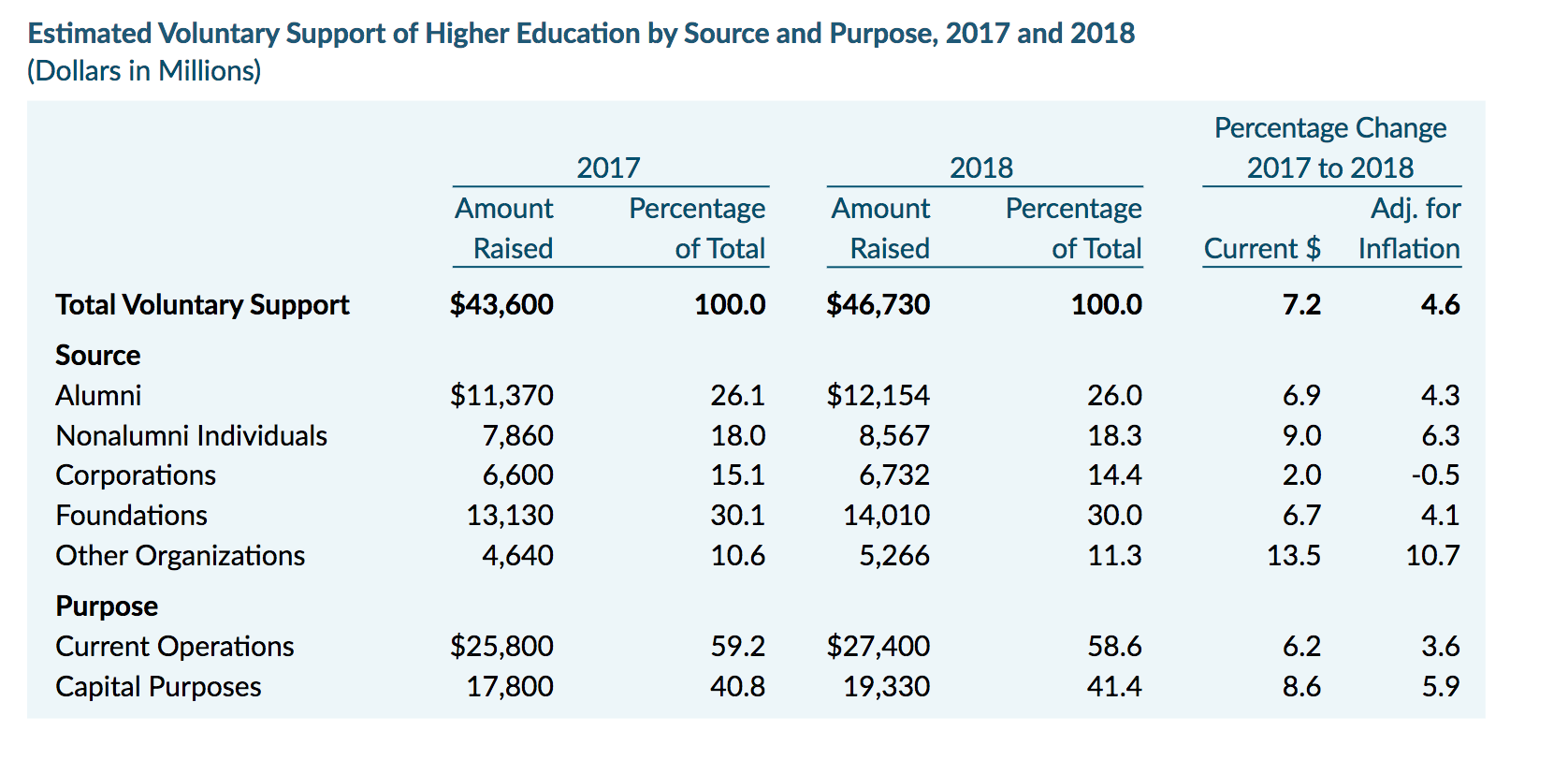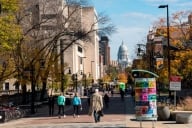You have /5 articles left.
Sign up for a free account or log in.
Charitable giving to colleges reached $46,730,000,000 in 2017-18, a one-year increase of 7.2 percent, or 4.6 percent when adjusted for inflation.
The data are from the annual Voluntary Support of Education report, now run by the Council for Advancement and Support of Education.
While Michael Bloomberg's mega-gift of $1.8 billion to Johns Hopkins University came after the last academic year and so will influence next year's totals, their report covers a year of numerous large gifts. Seven institutions reported gifts of at least $100 million during the year studied, more gifts of that size than in any previous year.
More than half of the funds raised went to doctoral/research universities -- public and private -- which are raising billions of dollars in campaigns.
The University of Michigan, for example, recently announced the final results of its seven-plus-year fund-raising campaign, which brought in $5.28 billion. While there were numerous large gifts, 94 percent of gifts were under $5,000. Michigan says that the campaign is the first by a public university to exceed $5 billion. Two other institutions have $5 billion campaigns going on: the University of Washington and the University of California, San Francisco. (You can track colleges' fund-raising campaigns at Inside Higher Ed's database, here.)
The new study shows the sources of gifts, in the year studied and the year before. While alumni give more than do nonalumni, the latter category is growing at a faster rate. Corporate giving went up only modestly, and not at all when adjusted for inflation.

The report cautions that the favorable trends in raising money could be threatened by an uncertain economy.
"The fiscal 2019 year ends on June 30, 2019, and we do not know precisely what the economy will look like at that time. However, there are signs that charitable contributions to U.S. colleges and universities will soften or decline in the next year reported," the study says. "The overall economy as measured by GDP has been expanding since June 2009 and is approaching, but has not reached, its longest expansion -- of 120 months -- in post-World War II U.S. history, leading some to speculate that a contraction is on the horizon. If that should occur, even if the National Bureau of Economic Research does not determine the nation is in a recession, contributions to U.S. higher education institutions for current operations may slow or decline."








